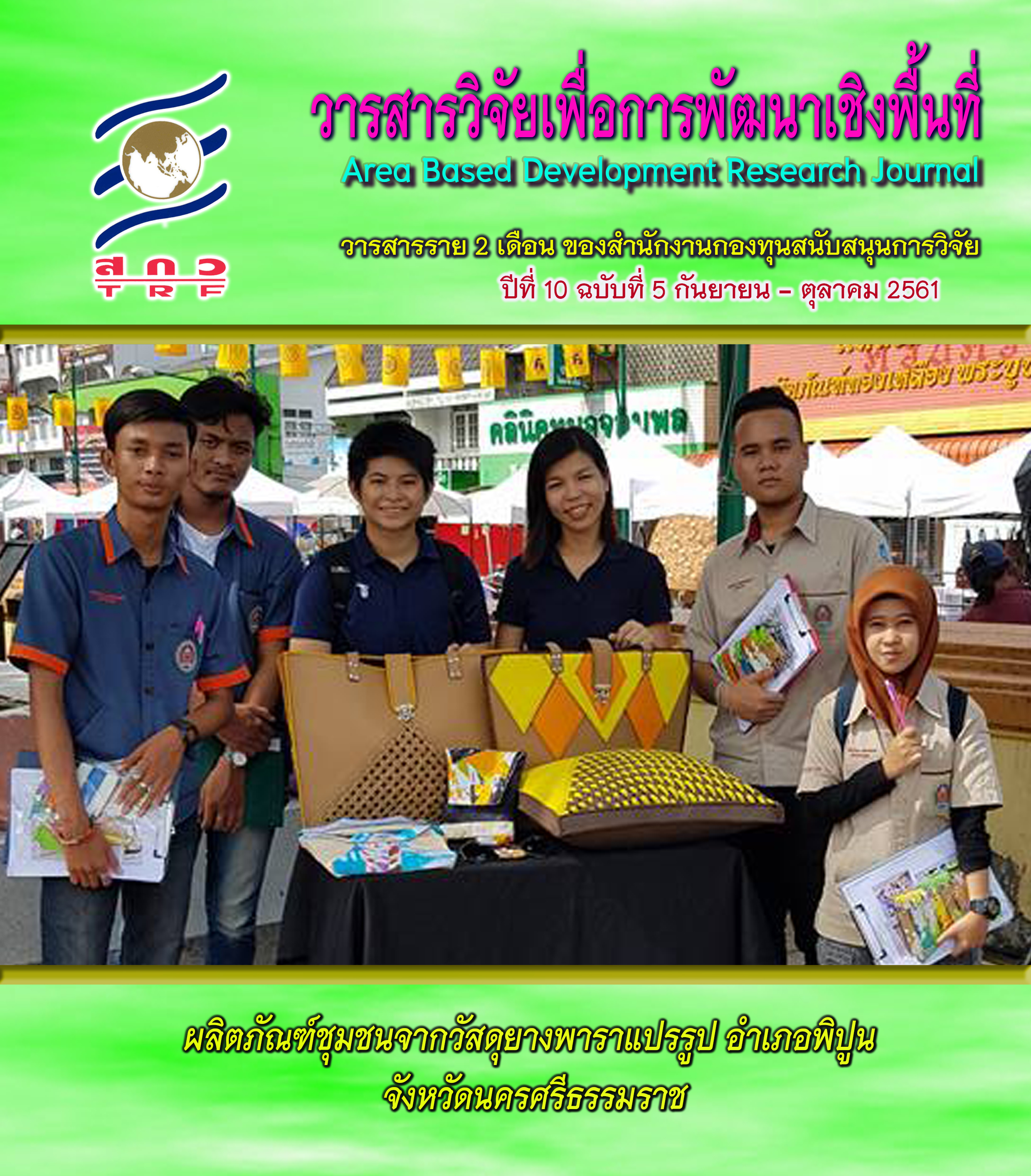Production of Fuel Briquette from By-product in Oil Palm Plantation at Ban Huai Yung, Krabi Province
Main Article Content
Abstract
The objective of this study is to produce an optimum mixture of oil palm trunk and oil palm fronds fuel briquettes by using starch paste as a binder to be used by ethnic farmers at Ban Huai Yung Huai Yung Sub-district Nueakhlong District, Krabi Province. The two types of briquettes studied are green fuel and charcoal briquettes. The ratios of oil palm trunk to oil palm fronds are 5:0 4:1 3:2 2:3 1:4 and 0:5 (by weight). An analysis on physical properties of fuel briquettes includes density and chemical properties such as moisture content, ash, volatile matter and boiling capacity. The results show the green fuel production with an optimum ratio of oil palm trunk to oil palm fronds at 4:1 (by weight). The density is 1.27 g/cm 3 . The moisture content, ash and volatile matter are 11.80±0.92% 6.53±0.31% and 92.60 ±0.20%, respectively. The boiling capacity is 80.33 °C. The optimum ratio for charcoal briquettes is 0 oil palm trunk to 5 oil palm fronds (by weight). The density is 2.31 g/cm 3 . The moisture content, ash and volatile matter are 7.53±2.19% 20.13±2.83% and 79.87±2.12%, respectively. The boiling capacity is 77.33 °C. It is concluded that briquette fuels are suitable for household and the community as they potentially replace firewood and reduce environmental problems.
